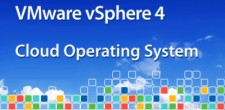 In this lab I used a Cisco Catalyst WS-C3560G-24TS switch [IOS Version 12.2(40)SE]. Using Cisco Port Security it is possible to associate a static MAC address to a physical port on a switch. This only allows one host with that specific MAC address to connect physically to the specified port. Continue reading
In this lab I used a Cisco Catalyst WS-C3560G-24TS switch [IOS Version 12.2(40)SE]. Using Cisco Port Security it is possible to associate a static MAC address to a physical port on a switch. This only allows one host with that specific MAC address to connect physically to the specified port. Continue reading
Cisco Port Security with Dynamic MAC Address Learning
How to Fix – Force10 S4810 Switch Stuck in Boot Loop
In this blog I discuss how to fix a common boot loop problem. A boot loop can occur if you change the boot variables for a switch and accidentally put in incorrect information. You may also make a typo when telling the switch which FTOS image to load. Then when the switch reloads, it will attempt to load the non-existent FTOS image. On the S4810 [FTOS 8.3.7.0], if the “primary_image” fails to load, it will try the “secondary_image” and lastly the “default_image”. If all three boot variables fail to load an image, the switch goes into a boot loop where it keeps retrying to load the images from “primary_image” to “default_image”. Continue reading
pNIC, vNIC, and vmNIC Confusion
 I have been using both remote desktop and vSphere Client quite often lately. Yesterday, I had a remote desktop session with a Windows Server 2003 physical server and also had vSphere Client (connected to an ESXi server) open with a console window of a Windows Server 2003 virtual machine (VM). Sometimes it’s easy to get confused, but, it’s important to remember that the vSphere Client and the remote connection to Windows Server 2003 are both using the physical NIC card adapter (pNIC). Continue reading
I have been using both remote desktop and vSphere Client quite often lately. Yesterday, I had a remote desktop session with a Windows Server 2003 physical server and also had vSphere Client (connected to an ESXi server) open with a console window of a Windows Server 2003 virtual machine (VM). Sometimes it’s easy to get confused, but, it’s important to remember that the vSphere Client and the remote connection to Windows Server 2003 are both using the physical NIC card adapter (pNIC). Continue reading
Functionality of Layer 2 Switches/Bridges

Layer 2 Switching (STP Needed)
Facebook Hack – How “shared” is your website on Facebook?
In this blog I describe a cool little data mining hack you can use to determine how “shared” a specific website is on Facebook. Let’s say you want to determine how often the “http://www.cnet.com” site has been “shared” on Facebook. Simply type in the following as the URL address in a browser: “http://graph.facebook.com/http://cnet.com”. The syntax to use to check any site is “http://graph.facebook.com/[website_address]”. See below snapshots for examples. Have fun! Continue reading
Setup SSH Access on Cisco Switches
The Cisco Catalyst WS-C3750G-24TS [IOS 12.2(25)SEE3] switch provides both layer 2 and layer 3 functionality. In this lab I’m going to demonstrate how to setup SSH access to the switch. The first thing I do is set a hostname and assign an IP address to an interface: Continue reading
VMware vSphere 4 Step-through
 VMware vSphere is an industry leading virtualization platform. Basically it is a software suite composed of applications directed towards managing datacenters through the use of virtualization technology. I’m going to briefly discuss some of the major/core components of vSphere 4. This will give you a clear idea of some of the power behind vSphere 4 and virtualization technology in general. For more information/documentation and a full list of benefits offered by vSphere 4, you should check VMware’s website. Continue reading
VMware vSphere is an industry leading virtualization platform. Basically it is a software suite composed of applications directed towards managing datacenters through the use of virtualization technology. I’m going to briefly discuss some of the major/core components of vSphere 4. This will give you a clear idea of some of the power behind vSphere 4 and virtualization technology in general. For more information/documentation and a full list of benefits offered by vSphere 4, you should check VMware’s website. Continue reading
Setup Telnet Access on Force10 Switches
I am going to use a Force10 S60 switch [FTOS 8.3.3.4] to demonstrate how to setup telnet access. To setup telnet access you first need to set an IP address on either a data port or a managment port so you can access it with telnet. Since the S60 has a management port, I’m going to use that. Continue reading
Creating a Link Aggregation Group (LAG) in FTOS
This lab demonstrates how to create a Link Aggregation Group (LAG) in FTOS on Force10 switches. A LAG in Force10’s FTOS is called a port channel and in Cisco’s IOS is called an EtherChannel. As described by IEEE 802.3ad, LAG is a mechanism for combining the bandwidth of multiple physical ports in a switch into one logical link. Therefore, a port channel can be treated as an individual port and can be configured as such (ex: can be set as Layer 2 or Layer 3, can be part of a VLAN, etc.). Continue reading



 Twitter
Twitter LinkedIn
LinkedIn Youtube
Youtube RSS
RSS